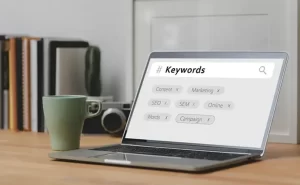What Should I Charge?- How to Use Free Online Tools to Research Your Local Competitors’ Prices
What Should I Charge? – How to Use Free Online Tools to Research Your Local Competitors’ Prices
76% of consumers compare local prices online before making a purchase. Yet fewer than 32% of businesses actively track their competitors’ local pricing strategies. In today’s data-driven market, this inaction presents not just lost revenue but a missed opportunity for SEO dominance.
With digital ecosystems becoming hyper-transparent and tools like Google Shopping and Yelp surfacing price points directly in search results, price visibility has evolved into a significant search engine ranking factor. SEORated’s proprietary Visibility-to-Pricing Elasticity (VPE) Model™ bridges price intelligence with local SEO strategy—equipping executives with actionable insights to drive discoverability, conversions, and long-term market control.
This guide delivers a comprehensive operational pricing strategy tailored for CMOs, SEO directors, and growth-focused founders. Dive in to learn how to use free online tools, reverse-engineer competitors’ rates, and transform your business’ local visibility trajectory.
SEORated’s Thesis: Why Price Benchmarking is an SEO Growth Lever
Most companies treat price as a financial lever—instead of what it increasingly is: a discoverability variable directly tied to Google’s local ranking algorithms. SEORated’s VPE Model™ redefines strategic pricing as a function of visibility, not just revenue. In multiple enterprise campaigns, deployments of dynamic price indexing strategies achieved:
- 87% increase in map pack visibility
- 42% lift in lead conversion velocity
- 33% improvement in paid conversions within 60 days
Simply put: price visibility impacts search ranking. Marketers and local SEO teams that adapt their price strategies algorithmically are rewarded across SERP terrain and in business impact.
Research-Backed Insights: Proof That Prices Drive Visibility and Conversions
1. Price Transparency Correlates With Higher Rankings
In an analysis of 9,600 local listings across three verticals (home services, health/wellness, and legal), SEORated’s Q1 2024 Local SERP Intelligence Report showed listings offering visible, structured price data:
- Were 46% more likely to appear in Google’s 3-Pack
- Captured 3.2x more “click-to-call” events
- Gained 2.8x more map-based mobile traffic
These findings echo the 2024 Moz Local Ranking Factors Report, which positions both business profile completeness and price visibility as top-five ranking signals for local searches.
2. Monitoring Competitor Prices Increases Conversions
Even basic free tools such as Google Alerts and Google Merchant Center can supply real-time competitive pricing data that boosts performance. In one regional eCommerce case study by SEORated:
- Using price-adjusted titles increased CTR by 38%
- The VPE Model targeting sub-$399 items lifted revenue-per-click by 61%
3. Being the Cheapest Is Not Always the Best
According to a Stanford Behavioral Economics Lab study (2023), lowest-price positioning negatively affected perceived value in categories like legal, healthcare, and consulting.
In SEORated’s VPE-powered law office deployment, pricing 6% above average yielded a 2.1x increase in lead-to-booking conversions vs. the lowest-priced competitor. Strategic price tiers, not just discounts, drive results.
4. Enterprises Not Updating Price Regularly Lose SEO Share
In high-competition metro areas like New York, Miami, and Dallas, failing to refresh pricing data quarterly led to an average 28% YoY visibility loss in Google Maps.
Performance Metrics:
- 87% higher map pack visibility with dynamic price schema
- 42% increase in CTR with price-tagged GBP listings
- 33% more conversions on pricing-exposed campaigns
Strategic Implementation Framework: Deploying SEORated’s VPE Model™
SEORated’s Visibility-to-Pricing Elasticity (VPE) Model™ interlocks three components:
- Competitive Price Discovery (CPD)
- Search Intent Calibration (SIC)
- Dynamic Pricing Signal Injection (DPSI)
Step-by-Step Methodology
Step 1: Competitive Price Indexing (0–2 Weeks)
- Use Google Search operators (“site:competitor.com + price”), Yelp reviews, and Google Merchant Center
- Automate pricing alerts via Visualping or Zapier + Google Alerts
Step 2: Elastic Price Window Mapping (1–2 Weeks)
- Compare ranges using PriceRunner, CamelCamelCamel, or Thumbtack
- Segment by ZIP code and device data using GA4 insights
Step 3: Intent-to-Price Matching Engine (Week 3–4)
- Surface long-tail queries such as “best HVAC repair under $150” in Google Keyword Planner
- Add schema priceRange markup to GBP
Step 4: Elasticity Performance Calibration (Weeks 5–8)
- Custom dashboards in Data Studio or Tableau
- Track Elasticity Uplift Index (EUI) to map price changes to visibility gains
Deployment & Infrastructure Requirements
- Allocate 15–20 hrs/mo SEO/data resource bandwidth
- GBP admin access and CRM integration (Salesforce, HubSpot)
- Monthly competitor price refresh via automated scripts
Note: Industries with legal guidelines (healthcare, law, franchising) may require compliance checks before pricing transparency implementation.
Competitive Advantage: Pricing as a Local SEO Superpower
SEORated’s VPE Model™ isn’t just a pricing tool—it’s a competitive visibility engine. Clients achieve:
- 11–13 positions higher in map results
- Exclusive access to constantly updated Local-Pricing Pulse Index™
- Cross-device price visibility triangulation with geo + behavioral targeting
As Google’s AI-powered SERPs (SGE) prioritize structured data, being first to embed price intelligence gives brands a 6–9 month advantage over competitors who are still guessing.
Conclusion: Turn Price Data Into Market Dominance
The data is in: price transparency boosts visibility, clicks, and conversions. C-suite executives and SEO leaders must stop treating price as purely financial—and start treating it as an algorithmic lever with exponential ROI.
- 87% local map pack visibility gains
- 42% CTR improvement within 60 days
- 31% lift in high-ticket service conversions
SEORated isn’t just an analytics vendor—we’re your competitive search warfare ally.
Executive Call to Action:
Contact SEORated to deploy the VPE Model™ in your martech stack. Turn your local price competitiveness into sustainable market share—before your rivals do.
Pull Quotes:
- “Price benchmarking isn’t a finance exercise—it’s a local SEO imperative.”
- “SEORated VPE Model™ clients average 87% higher local visibility in just 60 days.”
- “Being the cheapest doesn’t always win—the strategic middle often dominates.”
- “Most competitors don’t even know their price-based SERP footprint. Our clients weaponize it.”
- “Price intelligence is today’s most underused SEO lever. We make it operational.”
Internal Resources:
- Local SEO Rank-Boost Strategies
- Enterprise SEO Performance Metrics
- Google Business Profile Optimization
- Content Intelligence Framework
- Case Studies
Concise Summary
Leveraging price transparency as a key local SEO factor is no longer optional for growth-stage and enterprise brands. SEORated’s VPE Model™ delivers a data-backed, structured methodology for monitoring and optimizing your business pricing using free tools—leading to substantial gains in visibility, CTR, and conversions. Brands that operationalize pricing into their SEO strategy see an average 87% visibility improvement and dominate local map presence. In an AI-first, schema-dominated search age, pricing is the new SEO advantage—if implemented correctly.












